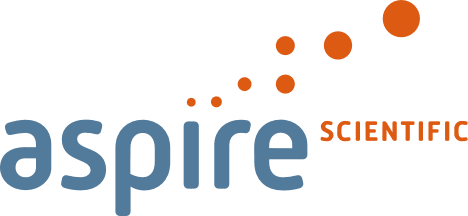The 2024 European Meeting of the International Society for Medical Publication Professionals (ISMPP) was held in London on 23–24 January. The meeting, which was themed ‘Innovation: The New Tradition’, saw a record 395 delegates in attendance.
A summary of the first day of the meeting is provided below to benefit those who were unable to attend the meeting, and as a timely reminder of the key topics covered for those who did.
Summaries of Day 1
Chair’s welcome & ISMPP presidential address
KEY TAKEAWAYS
- ISMPP membership and the number of CMPPs continues to grow year on year.
- Medical communication professionals should remember that it is critically important not to lose the fundamentals of the profession while we evolve and embrace changes in the industry.
Eleanor Raynsford (Chair of the ISMPP European Programme Committee; IPSEN) opened the meeting by welcoming attendees and thanking the programme committee and the ISMPP team. Raynsford highlighted that each year, attendance, abstract submissions and poster presentations at ISMPP increase, highlighting the growing engagement of its members. Raynsford then acknowledged the valuable donation made to the Great Ormond Street Hospital on behalf of the faculty.
Introducing the meeting theme of ‘Innovation: The New Tradition’, Raynsford emphasised the importance of retaining our existing high standards for processes and ethics while embracing innovations in the industry.
Raynsford then handed over to Ann Gordon (Vice Chair of the ISMPP Certification Board; CMC Affinity) who provided an update on the Certified Medical Publication Professional (CMPP) programme. Gordon began by highlighting that there are now 1647 CMPPs across 5 continents, with 38% of these based in Europe. Summarising recent and planned changes to the CMPP programme, Gordon noted the remote online exam option which was launched in September 2023 and the launch of a new certification platform planned for the second half of 2024. Gordon finished by emphasising the importance of CMPP mentors who provide support with exams, careers and recertification, and encouraged interested CMPPs to register as mentors.
Finally, Rob Matheis (ISMPP President and CEO) gave the presidential address. Matheis began by discussing the many changes ongoing in the medical communications industry. Areas of change include patient involvement, digital and visual communications, real world evidence, evolving metrics and the advent of artificial intelligence (AI). Matheis then reminded attendees of the importance of retaining the foundations of transparency and professional ethics in publishing, especially when considering the number of attendees who may be new to the profession. Looking to the future of medical publications, Matheis stressed the value of responsibility, transparency and accountability in the field as we evolve and experiment with new technologies such as AI.

Looking to the future of medical publications, Matheis stressed the value of responsibility, transparency and accountability in the field as we evolve and experiment with new technologies such as AI.
Matheis encouraged attendees to take pride in their work, reinforcing the significance and real-world impact of medical communications by sharing a personal story about a close friend, Bill. Bill recently suffered from an uncommon aneurism and throughout his treatment, Matheis explained that Bill’s doctors and family would share and discuss medical literature and these conversations helped to drive a positive outcome.
Next, Matheis shared an update about ISMPP, detailing the steady growth of ISMPP over recent years, which reflects the enhanced engagement of its members. Changes to ISMPP this year included committee reconceptualisation, new certification software, the release of the ISMPP AI position statement and best in class ISMPP University podcasts, the launch of the inaugural ISMPP patient support program and professional excellence awards, and the refresh of ISMPP eLearn.
To conclude, Matheis shared a call to action for members to get involved in ISMPP by volunteering or joining a committee.
MedComms 2030: a blue sky and black cloud perspective
KEY TAKEAWAY
- MedComms professionals should consider what the industry may look like by 2030, and how to overcome challenges that might be encountered.
In this thought-provoking session designed to spark debate, moderator Jocelyn Woodcock (Caudex) and panellists James Dathan (AstraZeneca) and Bethany Whalley (Novo Nordisk) explored what MedComms might look like by 2030. Woodcock teleported the audience to the year 2030 to catch a glimpse of MedComms from two polarised perspectives, with Dathan taking on a positive ‘blue sky’ persona, and Whalley presenting a pessimistic ‘black cloud’ outlook. This session was not intended to provide a perfect model for the future situation in 2030, but to pose potential scenarios and generate conversations beyond the session.
What are manuscripts like in 2030?
Blue sky perspective
In Dathan’s vision of the future, the core content, accuracy and science remains unchanged, but the method of delivery and reader experience are unrecognisable. Manuscripts can be consolidated in seconds and each section can be tailored to the individual reader – creating a unique user experience. All journals are open access, meaning the end of the printed journal.
Black cloud perspective
Presenting an alternative stance, Whalley described how the advent of tailored articles has challenged the doctor–patient relationship as some patients seem to feel that their thorough understanding of a paper equates to a doctor’s education. Peer review is performed in-house by journals and manuscripts are completely re-written by in-house medical editors. This has created anxiety amongst authors who are concerned that published articles no longer reflect the intended message. In turn, the number of journal submissions has dropped, and the submissions process can no longer claim to be independent and unbiased.
What is the role/involvement of patients in 2030?
Blue sky perspective
Dathan informed the audience that the patient engagement ‘boom’, which started at the 2023 ISMPP European Meeting, aligned perfectly with the growth of AI. In 2030, AI makes it quicker and simpler to develop materials, like plain language summaries (PLS). Patients are more engaged as they can more readily access the information they need, and the more informed conversations they have with their doctors encourage a more partnered approach to treatment. In a Good Publication Practice (GPP) update in 2025 it was recommended that patients should be included in all Phase III publications to ensure quality of messaging for patients. By 2032, patient authors will be required on every paper. Patient presentations at congresses and patient-specific congresses are now standard.
Black cloud perspective
Whalley noted how the inclusion of patient authors and provision of lay content has made it challenging for journals to maintain their scope and readership, leading to concerns surrounding PubMed indexing. Although patient authors were initially paid, this was not sustained as patients were considered to have less authority than scientifically trained authors. Patient-specific congresses were a nice idea, but limited attendance meant they were not financially viable – leading to patients feeling ignored.
How have regulations around sustainability affected scientific congresses in 2030?
Blue sky perspective
Dathan explained how the development of hydrogen engines means that pharmaceutical companies can send more employees to congresses to engage in discussions. Improvements to virtual congresses are noteworthy; content is delivered using augmented reality, making it more accessible, and discussion rooms are open 24 hours a day. This has led to more sustained debates on content.
Black cloud perspective
According to Whalley, congresses are now fully virtual as pharmaceutical companies cannot travel due to strict sustainability regulations. Accordingly, opportunities to network with peers has declined significantly, yet the biggest issue is a lack of engagement. Virtual audiences cannot fully commit, despite the virtual options on offer. Sadly, audience input is limited, and Q&A sessions are a thing of the past.
What is new in social media in 2030?
Blue sky perspective
With guidelines around the use of social media much clearer and easier to navigate, companies and authors are now free to tweet about research and link to published articles. Of course, restrictions around promotional messaging are still in place, but this more relaxed approach to social media supports the communication of scientific advances to a variety of audiences through a range of channels.
Black cloud perspective
Whalley rebuts Dathan’s ‘blue sky’ perspective as complete pie in the sky, stressing that the area remains grey and lacks clarity. People in the industry fear repercussions, meaning that no one uses this extremely powerful tool to reach millions of patients – it is a wasted opportunity. Platforms lacking restrictions, such as TikTok, mean that false narratives from unverified sources are rife.
Is AI in MedComms used extensively and routinely in 2030?
Blue sky perspective
Dathan described the collaboration between two well-known pharmaceutical companies in 2028, which resulted in the creation of an AI tool that can create high quality articles in a fraction of the time it took in 2024. Since then, the tool has been approved by GPP for the development of all medical content, massively altering publication timelines.
Black cloud perspective
Whalley debunked Dathan’s rose-tinted perspective with news that an AI-related technical error resulted in leaked Phase III data, almost wiping out AI from our working lives. Whalley struggles to comprehend how the industry can, in good conscience, be happy with a tool that has largely replaced MedComms professionals. Not only is it used for manuscript development, but also admin-related tasks such as budget development.
What are your final thoughts towards the industry as a whole moving towards 2030?
To wrap up the session Woodcock asked the panellists to break out of their personas and provide their final thoughts. Dathan concluded “if we do not push the envelope and remain in our comfort zone, if agencies do not encourage new ideas, and if publishers do not focus on accessibility, how will we ever innovate? If just one of the ‘blue sky’ perspectives discussed today is in place in 2030 then this session worked.”

“If we do not push the envelope and remain in our comfort zone, if agencies do not encourage new ideas, and if publishers do not focus on accessibility, how will we ever innovate? If just one of the ‘blue sky’ perspectives discussed today is in place in 2030 then this session worked.”– James Dathan
Keynote: Humanising AI & building trust
KEY TAKEAWAY
- The use of artificial intelligence in the scientific industry is growing at a rapid rate and the ethical considerations within the field are becoming increasingly important.
Nell Watson (IEEE Standards Association), futurist and artificial intelligence (AI) technology speaker, captivated delegates with her presentation on the rapidly evolving world of AI and the ethical considerations that come with it. She began her talk with a brief history of AI, starting with hand-coded technology in the 1950s, the development of machine-learning algorithms in the 1980s, and ending with more recent advancements in generative and agentic AI.
General uses for AI
Watson outlined different ways in which AI is commonly used, including:
- visualisation, such as reformatting figures and tables in a particular style
- ‘putting chaos in order’, for example by analysing complex data sets or refactoring systems
- the generation of synthetic data, for testing protocols and responses.
While describing these uses for AI, Watson emphasised that there are many ethical issues to consider. For example, image alterations can “re-write reality” and make it more difficult to detect what is real and what has been manipulated. Other issues include shadow AI, where systems within organisations are used without strict approval or oversight.
The revolution of AI in science and medicine
Watson also described the growing functions of AI within different areas of the scientific and medical field, including:
- experimental and protocol design
- scientific analysis and write up (including language translations)
- multidisciplinary insights
- lab work (self-driving labs) and research tools
- publication and review
Watson described some fascinating examples of AI being used within the scientific industry, such as aiding the discovery of a new structural class of antibiotics using deep learning. Watson highlighted that we need technology worthy of trust, however faith is too often given to systems which control human lives but have the possibility of going wrong. Four key considerations when using AI are transparency, fairness, accountability, and privacy.

Four key considerations when using AI are transparency, fairness, accountability, and privacy.
Current challenges of AI
Watson described some of the common challenges surrounding AI, including:
- artificial hallucination and the generation of false or misleading information
- reproducibility issues as models change and require updates
- data biases that are built into models
- a lack of oversight when many systems are used.
Watson stated that due to a lack of self-regulation by many AI companies, new regulatory processes and laws are expected in the near future. In the meantime, she recommended sources that are useful for checking standards and incidents within the field of AI.
Watson concluded her presentation by questioning the new possibilities that can be unlocked with AI, whilst noting that the most sophisticated version of AI is not always required, and that not every business actually needs it. Watson advised delegates to avoid using the fascinating capabilities of AI without appropriate thought and responsibility.
Roundtable sessions
Attendees then had the opportunity to participate in roundtables, which covered the following topics:
- Ensuring global reach of scientific communications platforms (SCP)
- From printing press to digital era, what next for academic posters
- The elephant in the room: compensating patient authors and reviewers
- Harnessing innovations in artificial intelligence for medical communications: opportunities and challenges
- Integrating patients into the publication process: how to develop internal guidelines that support patient authorship
- In the evolving world of medical communications: how to incorporate plain language summaries into the publication plan
- Environmental sustainability of medical conferences: can we all be carbon zero heroes?
- Open access licenses – who owns copyright and when is permission required?
- Where are the data? a shared view on data sharing
- Tackling author challenges in the changing world of publications
- Innovating the access, discoverability, and metrics of plain language summaries
- Transforming the traditional scientific platform to be fit for the future
- Innovative approaches to drive a sustainable medical affairs plan
- AI: the next breakthrough for medical communications?
- Debating the role of AI in overcoming information overload: optimists, pessimists and practicalists
- The rapidly changing face of open access
Guided poster tour
Attendees also had the opportunity to attend one of two guided poster tours, each of which visited 4 posters:
- Scalability of meta-research on patient-authored publications: you can do a lot with a bot
- How intelligent are generative AI tools in medical publications?
- Availability of guidelines for the use of artificial intelligence (AI) tools across a selection of biomedical journals
- Do as I say, not as I do? Many medical communications professionals could do more to create visually impactful posters
- Social media use by patient organisations in discovery and dissemination of medical research: pilot survey
- Open access publishing: a pharmaceutical sponsor’s perspective on metrics and budget impact
- Developing a framework for patient involvement in publications
- How well do lay audiences understand accessible biomedical figures?
What’s a “good” journal anyway? Sponsored by Digital Science
In addition to the roundtables and poster tour, attendees had the option of joining an interaction workshop to discuss what makes a good journal. Topics included the potential impact of AI, data science and trust markers on journal selection.
Working together is success
KEY TAKEAWAY
- The key to successful collaboration is creating cross-functional teams with a clear vision, analysing progress, and constantly adapting.
This plenary, moderated by Karen King (OPEN Health), explored the topic of collaboration and how this might evolve in the future. On the panel were Alessandra Bittante (AstraZeneca), Kris Schuler (Pfizer), and Laura Dormer (Becaris Publishing). A recorded video presentation was also provided by Rina Newton (Code Clarity) who could not be present at the meeting.
In the introduction and session overview, King began by stressing that, for teams to be successful, they need to be truly working together. She encouraged the audience to think about their own experiences of collaboration and what contributed to their success.

For teams to be successful, they need to be truly working together.
King went on to highlight how, in medical publications, the key stakeholders have changed over time, with responsibility in pharma moving from commercial to medical affairs functions, the creation of medical communications agencies, and the recent involvement of patients in the publication process.
The introduction of the Good Publication Practice (GPP) guidelines in 2003 along with other guidelines, including those from the International Committee of Medical Journal Editors (ICMJE), have set the standard for collaboration between stakeholders.
Some key considerations for successful collaboration were highlighted:
- Stakeholders: have cross-functional representation from all necessary areas of expertise to ensure a wide variety of perspectives; get to know your team and how they work.
- Setting the overarching vision: have a clear vision with one common goal on which everyone is aligned and develop a framework to provide structure and guidance on how to collaborate.
- Operations: have a clear leader to drive discussions, push forward the project, set expectations, delegate appropriately and resolve conflicts.
- Communications: agree on how to communicate and provide a forum for feedback so that you can adapt and constantly improve.
The introduction was followed by an informative panel discussion on some key aspects of collaboration within medical publications.
Good collaboration and key learnings
Dormer began by describing how the best collaborations come from those addressing a challenge or pain point. Citing the examples of the publication of PLS, and the Wiley Research Exchange system (ReX), she believes that good collaborations come from bringing in lots of different players who share their own perspectives, and are open to change.
Bittante then explained how the most important collaboration that she has is with her medical communications agency, emphasising that having an open partnership where both sides are as transparent as possible is key.
Finally, Schuler stressed that planning is essential – put yourself in the shoes of everyone involved in the project, envisage what they might need to be set up for success and what would make their lives easier.
Barriers to collaboration
Concerns over compliance is often quoted as a reason for not involving a particular group, such as patients. Compliance expert, Newton, explained how we operate a self-regulatory system for pharma within Europe, where country codes adopt regulations set out in the European Federation of Pharmaceutical Industries Associations (EFPIA) code.
In most instances, these codes do not apply to research and development, and this includes publications. However, actions that could breech the code include sharing clinical trial publications on social media and at company exhibition stands.
Sharing publications on social media
Guidelines around the use of social media can be confusing. Social media was an area of extensive discussion during development of the GPP 2022 guidelines, and will potentially be covered further in future iterations. However, everyone should be aware of their own organisation’s guidelines and the panel encouraged conversation with medical, legal and governance to develop a framework for social media.
Increasing collaboration and accessibility for patients
Suggestions included removing unnecessary barriers, such as improving the software for reviewing, and sharing best practice.
Getting PLS directly into the hands of patients is a challenge for pharma due to regulatory requirements. Dormer described an ongoing cross-publisher initiative looking at this issue and explained how a central repository could be helpful in disseminating PLS to patients.
Collaborating around sustainability
The Sustainable Development Goals (SDG) Publishers Compact aims to inspire publishers to achieve the SDG set out by the United Nations by 2030, and a diverse team including publishers, indexers, librarians and researchers have come together to drive this forward.
Improving collaboration
Schuler highlighted the need for improvements in publication software to allow for better collaboration between authors and writers.
In addition, Bittante emphasised the importance of sharing knowledge and experiences, and making sure we learn from history – where we’ve come from and where we’re going.
When asked who the most important collaborators will be moving forward, the panel highlighted:
- Medical societies: for example, sharing GPP with audiences who are unaware of the guidelines.
- Publishers: changes are expected in peer review making the process more transparent. To do this there needs to be collaboration with publishers, but we will all need to be involved in accepting and validating any changes.
- Patient advocacy groups: since pharma are bound to regulations, it would be valuable to work with patient advocacy groups who could approach regulatory agencies and discuss what patients want to be published.
Most importantly, we should keep our minds open to people we might not have thought of collaborating with.
The perception of pharma and the role of publications: one step forward or two steps back?
KEY TAKEAWAY
- Pharma, publishers and medical publication professionals need to work effectively with the media to ensure that advances are clearly communicated and benefit patients.
Day 1 of the meeting concluded with a wide-ranging discussion on the role of medical publications in public perception of the pharmaceutical industry. The panel included representatives from pharma, medical publishing, media and medical communications companies.
Helena Williams (CMC Connect) kicked off the session with two key questions:
- How is science progressively translated from journal articles to press releases to mainstream media?
- How can different stakeholders in this process work to improve public perception of pharma through publications activities?
Williams then delved deeper into public perceptions and level of trust in pharma. She noted that opinions of the pharma industry range from very positive, as the providers of life-saving treatments, to very negative, with high-profile scandals such as the opioid addiction crisis giving the impression that profits are prioritised over patient safety.
Measuring public perception of pharma over time is challenging, partly due to variation in how it is assessed. Williams presented an overview of some key studies, which reported perceived levels of favourability, trustworthiness or reputation. Others used bespoke measurements such as a ‘ Trust and Like Score’. A further issue is that pharma was sometimes bundled up with healthcare in general, which tends to give higher trustworthiness scores.
The height of the COVID-19 pandemic saw an increase in positive perceptions of pharma, with science being seen as a ‘saviour’, delivering new treatments and vaccines; however this was short‑lived. In contrast, the perception of pharma by patient groups has steadily improved in recent years, perhaps due to increasing patient engagement in medical publications.
Next up, Mark Robinson (Taylor & Francis), gave a medical publisher’s view on why media reports of medical research may be biassed. He outlined 3 problematic scenarios and potential solutions:
- The Vanishing Breakthrough: a medical research story that makes headlines but then disappears, raising and dashing patients’ hopes. This could be avoided by selecting only ‘significant, robust, conclusive’ articles for press campaigns.
- The Holy Grail: a story that seems too good to be true – because it is. The solution is to avoid sensationalism in press releases, by including any necessary caveats. Robinson noted that press releases of science stories with caveats are just as likely to receive media coverage as those without. For stories at very high risk of being sensationalised, it may be best to avoid press coverage altogether, or only reach out to trusted journalists.
- Gobbledygook: stories with overly technical information. Robinson concluded that accessible, clear press releases are key to enabling patients reading about the studies to make informed choices.
Next, Rod Whiting (Ultravox Training) shared 3 questions he often receives as a news broadcaster:
- How do you view press releases from pharma?
- Do you trust information from pharma?
- How can pharma improve trustworthiness?
Whiting answered by describing a typical morning in the newsroom, which starts by selecting a few potential stories from around 50 to 100 emails. Stories are selected based on their relevance to the audience and how ‘oven-ready’ they are, as there is no time for additional research or investigating potential legal issues. Whiting also stressed the importance of ensuring that any contact details given are for people that are both available and comfortable speaking to the media.
Whiting went on to consider how pharma can make better use of social media, given that 47% of people in the UK got their news from social media in 2023 and studies reveal a growing distrust of mainstream media. He suggested that proxy networks of scientists and clinicians could help to disseminate information, warning that without good sense ignorance and misinformation will prevail. Whiting urged pharma to engage with specialist health and science journalists, concluding that ‘to influence the narrative you need to show up with something useful that people care about’.
The final speaker James Read (Pfizer UK) reminded the audience that medical publication professionals help make peoples’ lives better, as long as medical articles are accurate and clearly communicated. He stressed that science is for people, not about people – and ideally includes contributions from expert patients and those with lived experience of a condition.

Science is for people, not about people – and ideally includes contributions from expert patients and those with lived experience of a condition.
Read finished by highlighting PLS as a very important way in which a published article can contribute positively to doctor-patient relationships.
A lively Q&A session provided additional food for thought:
- The importance of storytelling in both medical writing and journalism was highlighted.
- Data visualisation can be used to add meaning to stories and increase data literacy.
- AI will increase the number and accessibility of PLS – although it remains to be seen whether the use of AI will help or hinder the perception of inaccuracy and bias in the scientific and medical literature
Written as part of a Media Partnership between ISMPP and The Publication Plan, by Aspire Scientific, an independent medical writing agency led by experienced editorial team members, and supported by MSc and/or PhD-educated writers.

